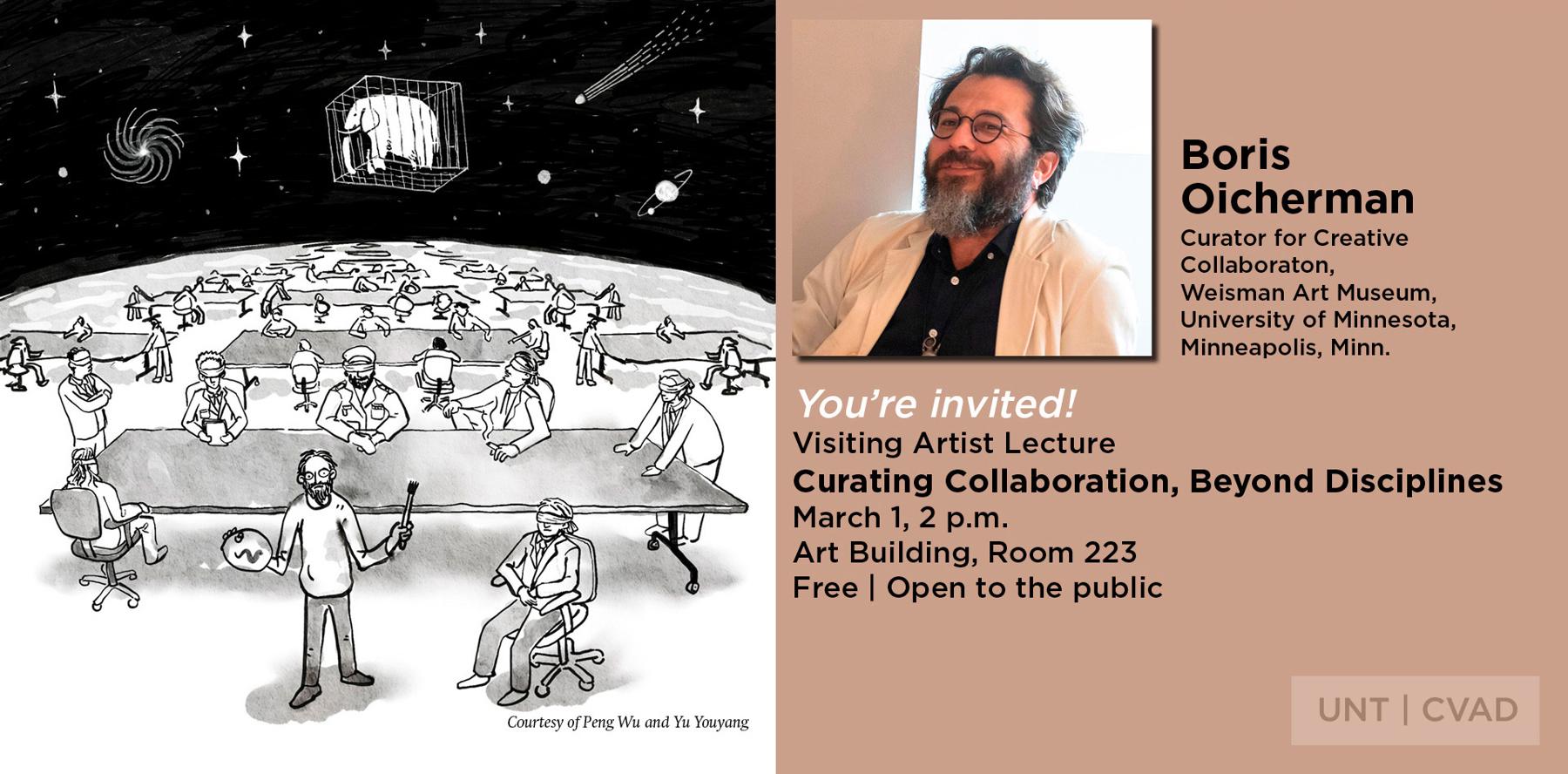
The Department of Studio Art hosts Visiting Artist Boris Oicherman for a lecture and workshop
Lecture: Curating Collaboration, Beyond Disciplines
March 1, 2 p.m.
Art Building, Room 223
Free | Open to the Public
Boris Oicherman, the Cindy and Jay Ihlenfeld Curator of Creative Collaboration at the Weisman Art Museum, University of Minnesota, will be here to discuss his work as a curator. He also plans to describe how his curatorial work developed from artistic practice and analyze art-historic examples and theories that inspired him and present projects that exemplify his approach in artistic and curatorial work.
Some of the most significant developments in the arts of the recent decades belong to the spectrum of Socially Engaged Art. Artists take their work outside of studios and galleries, engage with communities, corporations and governments, and take on projects that effectively challenge systems of knowledge and power. Such art varies widely from traditional art forms in new settings — from community sculpture workshops to completely new forms such as speculative financial models or social systems design. One thing, however, is shared by the entire spectrum of social art practices: none of them can be done alone. Whether working together with fellow artists, with practitioners of other professions, with researchers, with communities or with institutions — creative social engagement necessitates collaboration.
As with any other professional tool, collaboration is a skill that involves techniques, methods, theories and histories. Unlike most other skills, however, there is little guidance that young professionals can get in acquiring the skill of collaboration: most just figure it out the hard way as they go along.
About Boris Oicherman from the Weisman Art Museum
Educational Background: I studied printing technologies in Israel (Hadassah College Jerusalem, Israel), color science in the UK (M.Sc. in the London College of Communication, Ph.D. in the Leeds University), and art in the U.S. (MFA, Stanford).
What does a Ph.D. of color science consist of? Color science is a multidisciplinary field that deals with the relationship between color perception and color technologies such as printing and photography. In my Ph.D., I researched the practical implications of differences in color vision between people. For instance: what are the chances that the graphic designer and his client will disagree on a color because of their differences in perception? The research was mostly psychophysical: designing experiments that help learn relevant aspects of color vision.
How does your background in color science and the corporate world influence what you bring to the table as a curator? I studied technology, worked with large companies, created and exhibited art – each of these worlds has a unique culture and language. The most important lesson my experiences have taught me is the appreciation of the differences and the commonalities of these cultures, and the ability to develop a common language with people of diverse professions. My job as the curator for collaborations will be creating conditions where professionals from different fields work together, and my ability to speak many professional languages will, I believe, be of great help here.
Image: Black-and-white drawing of many blindfolded people sitting at large tables with one man holding a color pallet who is not blindfolded. The background shows the number of tables going back as far as the eye can see and the black sky shows stars, nebula, planets and one floating cage with a tusked elephant in it. Image "Irwin at Corporate Meeting" courtesy of Peng Wu and Yu Youyang. Portrait of Boris Oicherman.






